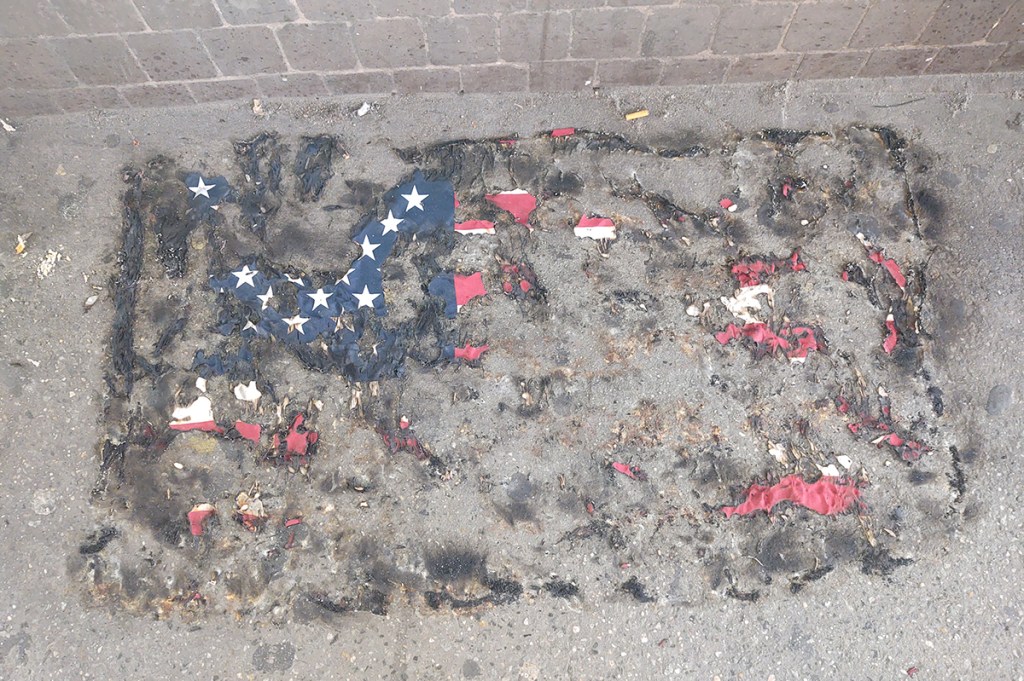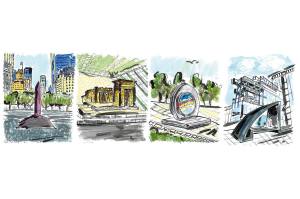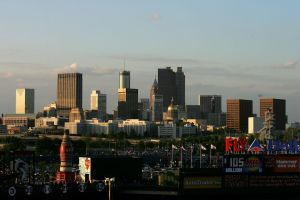On my way to work in Midtown Manhattan each day, I pass down 50th Street. Near the corner of Broadway, not long ago someone glued an American flag to the sidewalk and set fire to it. The scorched remnants cry out in resistance to the attempted insult and erasure.
I have no idea what protest prompted this indignity, or whether the person who sealed the flag to where pedestrians would trample it was the same who decided to set it on fire. I haven’t noticed any passersby taking special note of Old Glory reduced to such an inglorious state, surrounded by cigarette butts and other debris.
This isn’t New York City’s fault. We are amid more pressing crises. The subway entrance nearby — one of the main points of access to Midtown — reeks of urine and sometimes worse. We ride it knowing that at any moment some homeless turnstile jumper may try to push someone in front of a train, knife a stranger or, as happened last weekend, shoot a man dead for looking at his cell phone.
Most, but not all the perpetrators are young black men, but older black men and black women have gotten into the game as well. But we can’t talk about this except as a “mental health” crisis. Truth be told, it is an anger crisis. Our political elites have endorse the idea that “black rage” is a legitimate form of self-expression. It is “legitimate” by way of the idea that it represents the upwelling of resentment against centuries of oppression. It is acted out mostly by un- or under-socialized young black men who lack both skills and self-control. They may not feel “rage,” or know exactly what the folks at the New York Times are saying, but they certainly pick up the idea that, at the moment, “anything goes.” Short of murder, they face no consequences for their acts. If they are arrested they will be released before the day is over.
The lockdown left Midtown Manhattan with dozens of vacant office buildings and probably hundreds of empty storefronts. It wasn’t only the mom ’n’ pop stores that closed, but the boutiques selling things like high-end shoes and fancy watches. White collar workers have relaxed into telecommuting and even the hard-nosed employers who want their salaried workers back on site have conceded that two or three days a week are enough. That means the lunchtime restaurant trade has dried up, likewise jobs for waitstaff.
So public safety, social disorder, and economic decay are abundantly evident here in Midtown. But so are the tourists. If the workers are thinned out, Times Square is still full of sightseers; perhaps their visits are made a bit more piquant by the knowledge that any moment they might see an exchange of gunfire between the guys selling rival knock-offs of Gucci bags. It happens. I’ve missed the fireworks myself but have seen the cops in running after and tackling some of the malefactors.
Walk down almost any Midtown street and you will inhale the skunky smell of marijuana which is smoked in copious amounts by people anesthetizing themselves against their surroundings. But only some of the streets provide the spectacle of intravenous drug users shooting up. Users who have nodded off in their opiate dreams adorn the street corners like postmodern statues. Others nonchalantly tie off and inject at the outdoor seating that one of our past mayors helpfully planted on Broadway to give the city a more hospitable feel.
This may sound like one of those seventh circle of hell accounts of life in the Big Apple. But it isn’t really like that. I lived in the city all through the pandemic, and made it into my office from the Upper West Side through the worst of it. My wife and I are wary and have so far avoided any personal confrontations. I know the homeless people on my daily route and many of the building guards. I ride the subway and know when to change cars if I spot someone auditioning for a part in Death Wish IX.
With all that said, New York City still provides a culturally rich life if you know how to find it.
And what is true of New York City is true of the rest of the country. Some of depravity is to be found everywhere, and even worse things have happened in small villages and towns in places far away from the political insanity of New York. Guns are not the problem. Even fentanyl-laced drugs are not the problem, at least not the primary problem. Nor is the self-willed economic catastrophe of inflation and financial distress. These count, but they are essentially reflexes of a culture in a spiral of decline.
National self-hatred plays itself out in the dispirited presidency of Mr. Biden as well as the lunging efforts of demagogues of all stripes to assert simple answers to deep-seated rejection of the nation’s fundamental sense of purpose. Those who promise us a “fundamental transformation,” are indeed delivering. We are being transformed from a nation that put as its ideal personal liberty, the rule of law, a kind of basic courtesy and a sense of human equality into a nation where racial resentment, victim group identity, humiliation, safetyism and domination by well-positioned elites define our common life.
Outrage that someone would plant a flag to be trampled on, burned and forgotten is no longer automatic. But it is, so to speak, still available. We can summon it. Here goes.
This Memorial Day is a day to remember that better men — mostly men, but women too — gave their lives to defend this country and its principles. “Gave their lives” is too bland a way to say it. They fought in some cases knowing that near-certain death awaited them. They did so inspired by a belief that the sacrifice was worthy and ennobling, and not just to themselves. It was a gift to their fellow Americans and all others who prized liberty. We sometimes say they fought for the flag. That may be literally true in a few cases, but mostly it is a metaphor. It means they fought for the values of the society for which the flag is an emblem. Those include their faith in God, their love of their family and that vaguer but nonetheless powerful belief that America is an idea worth preserving and passing along to the generations to come.
We’ve learned how easy it is to sneer at these sentiments and, sometimes literally, trample them under foot. Right now we may be learning what the consequences are of such self-absorbed heedlessness. This Memorial Day let’s remember what that flag stood for, and what it could stand for again — though that will take a profound change of heart among many of co-residents, who have a ways to go before we can once again call them co-patriots.


















